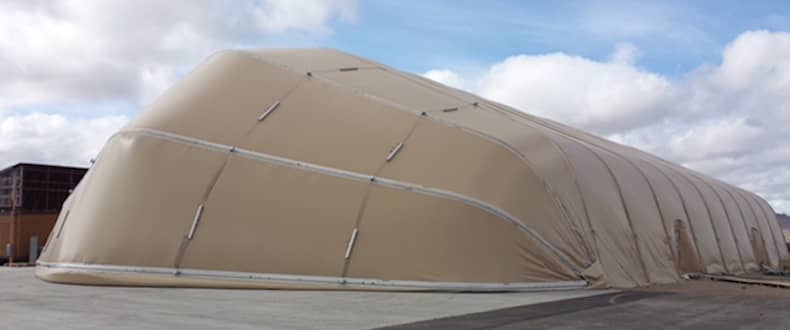 The Pentagon has recently been clamping down on adherence to “buy American” laws like the Berry Amendment and the Buy American Act. Building contractors working on U.S. government and military projects must be vigilant about the origin of the material they use.
The Pentagon has recently been clamping down on adherence to “buy American” laws like the Berry Amendment and the Buy American Act. Building contractors working on U.S. government and military projects must be vigilant about the origin of the material they use.
The Laws
The Berry Amendment emphasizes that, whenever possible, funds be used for goods grown, reprocessed, reused or produced in the United States. The Buy American Act generally requires that federal construction projects only use articles, materials and supplies that were mined, produced or manufactured in the United States.
The recent closing of a major domestic yarn supplier will make it more difficult for contractors to meet the Berry Amendment with domestically sourced yarns. Seaman Corporation has made significant investments moving forward to provide Berry-compliant materials to enable the contractors to supply domestic sourced goods. Domestic Non-Availability Determinations (waivers) will not be required for the near future on Seaman Corporation’s products.
Compliant Architectural Fabrics
Most providers of architectural fabrics manufacture overseas, but there are proven, reliable domestically made options. For example, U.S.-made Shelter-Rite has been protecting troops, staff and equipment for more than 40 years, using a proprietary coating that stands up to weather, UV, mildew and other challenging conditions. With high tensile, tear and seam strength that delivers unmatched durability, Shelter-Rite makes “buy American” compliance an easy choice.
Projects
Architectural fabrics have played a key role in U.S. government and military buildings for more than half a century. Durable, cost-effective and remarkably versatile, they’ve been used on thousands of different types of structures and have protected countless numbers of people and pieces of equipment from the elements in a wide range of environments.
It began in the 1950s, when architectural fabrics were used as radar dome covers. They really came into their own with the advent of Seaman’s patented Portomod framed structure in the mid-1960s, which continues to serve a wide variety of end users, and is heavily used by the U.S. military.
The usage of architectural fabrics has evolved, and now they’re a trusted component on all types of buildings and framed structures. You can commonly find architectural fabrics on modular large area maintenance shelters (MLAMS), artillery ranges, warehouses, command posts and more.
Fabric Advantages
Architectural fabrics are prized for their versatility and flexibility. They can be used on a wide array of projects in virtually any environment. Some vendors also offer a wide range of styles, colors and finishes that blend into the environment or stand out, depending on client needs. Architectural fabric buildings can also be raised or removed quickly, and work on any size structure.
Quality architectural fabric can last 25 years or more, and even at the end of its useful life, it offers savings because existing frames can be recovered quickly and easily.
Stay Compliant with High-Quality Choices
Whatever architectural fabric option you choose for a U.S. government or military project, complying with “buy American” laws is vital. Be sure the fabrics you choose meet all the requirements as outlined in the Buy America Act and the Berry Amendment.
To learn more about Shelter-Rite and its compliance with these laws, contact us.


